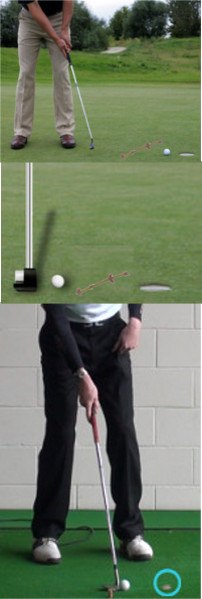- Examples of loose impediments: Fruit skins, seeds or cores; ant hills, spider webs; a fallen tree that’s broken off from its roots; soil plugs left by course maintenance (aeration); unreplaced divots (i.e., a divot lying in the fairway).
- Examples of objects that are not loose impediments: An embedded rock or acorn that can’t be easily moved; pieces of fruit that are stuck to the ball; a fallen tree that’s attached to the ground; replaced divots (i.e., a piece of turf that’s been put back in the hole it created).
- Penalties for violating Rule 23-1: Match play – loss of hole. Stroke play – two strokes.

Note: The Rules define “loose impediments” as natural objects that aren’t fixed or growing, solidly imbedded or stuck to the ball. Examples include rocks, leaves, branches and the like; animal droppings; worms, insects and similar animals, as well as their casings or anything they’ve left or built.
Sand and soil are only considered loose impediments on the green. Snow and ice, but not dew or frost, can be treated as either loose impediments or casual water – player’s choice.
23-1. The player can remove a loose impediment without penalty unless the object and the ball are in or touching the same hazard. However, if the ball is off the putting green and moves while the player is removing a loose impediment, there is a one-stroke penalty. There’s no penalty if the ball or marker accidentally moves on the green while the player removes a loose impediment; the ball must be replaced.
The Rules prohibit moving a loose impediment that might influence a ball that’s already in motion.
The player can’t move or touch a loose impediment in a hazard where his ball lies.
Golf Rule 23, Loose Impediments
Note: The Rules define “loose impediments” as natural objects that aren’t fixed or growing, solidly imbedded or stuck to the ball. Examples include rocks, leaves, branches and the like; animal droppings; worms, insects and similar animals, as well as their casings or anything they’ve left or built.
Sand and soil are only considered loose impediments on the green. Snow and ice, but not dew or frost, can be treated as either loose impediments or casual water – player’s choice.
Examples of loose impediments: Fruit skins, seeds or cores; ant hills, spider webs; a fallen tree that’s broken off from its roots; soil plugs left by course maintenance (aeration); unreplaced divots (i.e., a divot lying in the fairway).
Examples of objects that are not loose impediments: An embedded rock or acorn that can’t be easily moved; pieces of fruit that are stuck to the ball; a fallen tree that’s attached to the ground; replaced divots (i.e., a piece of turf that’s been put back in the hole it created).
23-1. The player can remove a loose impediment without penalty unless the object and the ball are in or touching the same hazard. However, if the ball is off the putting green and moves while the player is removing a loose impediment, there is a one-stroke penalty. There’s no penalty if the ball or marker accidentally moves on the green while the player removes a loose impediment; the ball must be replaced.
The Rules prohibit moving a loose impediment that might influence a ball that’s already in motion.
The player can’t move or touch a loose impediment in a hazard where his ball lies.
Penalties for violating Rule 23-1: Match play – loss of hole. Stroke play – two strokes.






